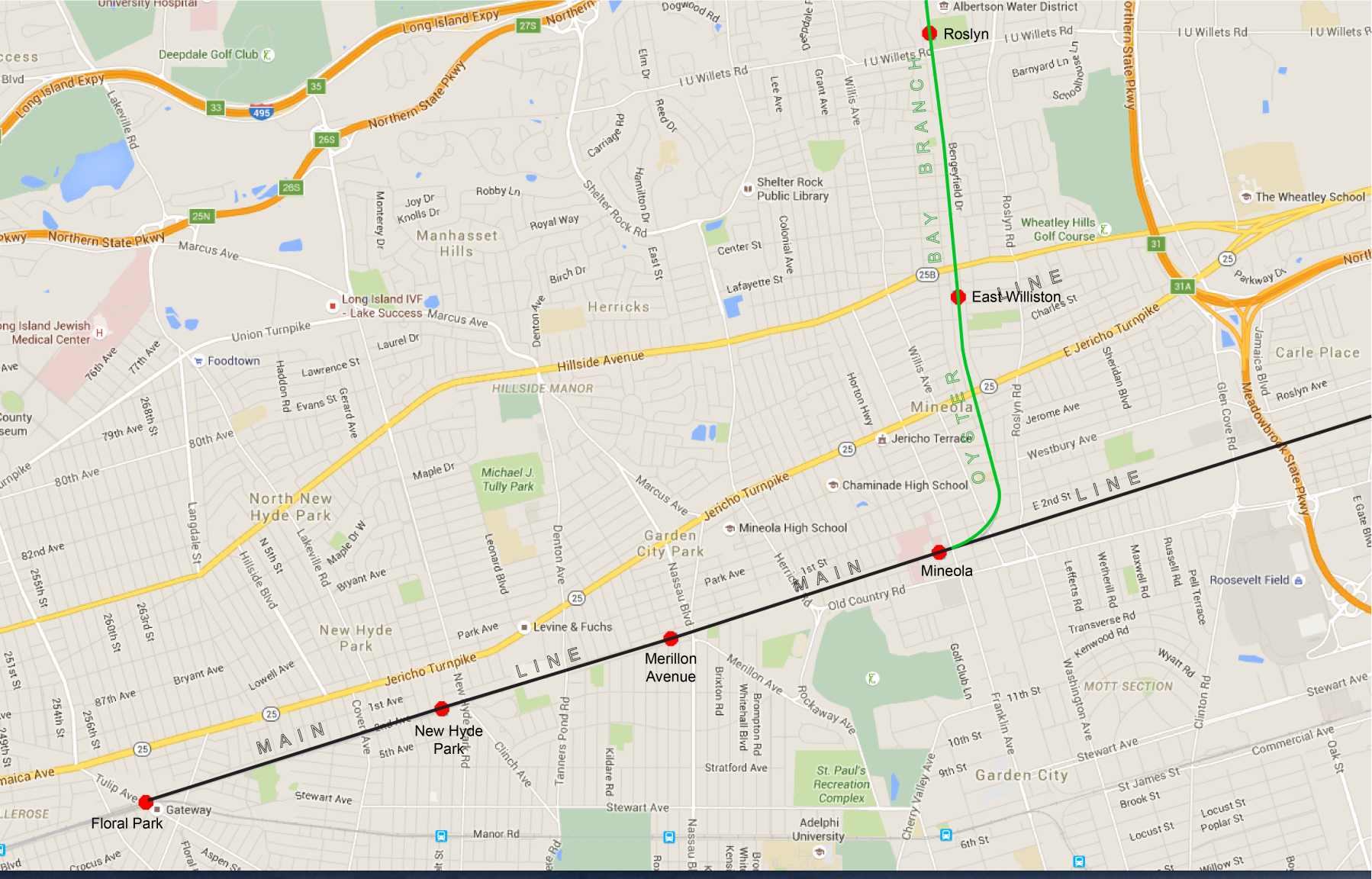Gov. Andrew Cuomo and the Metropolitan Transportation Authority announced plans Tuesday for a third Long Island Rail Road track, resurrecting a proposed project several North Shore communities have strongly opposed in the past.
The project, part of a downstate infrastructure package in Cuomo’s proposed budget, would add a third track along 9.8 miles of LIRR’s Main Line between Floral Park and Hicksville.
“Long Island’s future prosperity depends on a modern transportation network that eases congestion on our roads, improves service on the LIRR, helps this region’s economy and preserves the character of these great communities,” Cuomo said in a statement released after his Tuesday morning speech to the Long Island Association, a business group.
Reportedly expected to cost $1 billion to $1.5 billion, the project would reduce train delays and traffic congestion on east-west highways by allowing for more rush-hour trains from New York City to Long Island, attracting reverse commuters and spurring economic growth, Cuomo’s office said.
Trains on the Ronkonkoma, Port Jefferson Oyster Bay branches and some on the Montauk branch use the Main Line.
Those trains stop at stations in Mineola, East Williston, Roslyn, Albertson, Floral Park, New Hyde Park and Merillon Avenue in Garden City.
With only one track in each direction, it’s hard to route trains around disabled trains or incidents on the tracks, causing “cascading delays rippling across the line,” Cuomo said.
An additional track would be a much-needed upgrade to “the central spine of the busiest commuter railroad in the United States,” which has long been “at its heart very fragile,” LIRR President Patrick Nowakowksi said in a statement.
The project would require the state to take land from 50 properties — mostly in Mineola — along the LIRR’s right of way, down from 200 acquisitions needed for 2005’s third-track plan, the MTA said.
The plans contain provisions to compensate property owners for land it would need, an average of five feet wide for the 20 residential properties involved.
Full buyouts would also be available for residences, and businesses could get help from Empire State Development to relocate nearby if necessary, Cuomo’s office said.
Intense opposition from officials and residents in villages along the Main Line, including Floral Park, New Hyde Park and Mineola, previously derailed the third track.
The MTA abandoned initial plans in 2008, but has said a third track is necessary for its East Side Access project, which will put an LIRR station below Grand Central Station.
Floral Park Mayor Thomas Tweedy said Cuomo’s announcement “pulled back the scab on an old wound.”
In a conference call late Tuesday afternoon, state Sen. Jack Martins (R-Mineola) called the project “dead on arrival,” telling Tweedy and other mayors he hadn’t learned of Cuomo’s impending announcement until late Monday night, Tweedy said.
“This is dead and buried. This is long gone,” Tweedy said. “It was debated far and wide, and it has no merit.”
The LIRR plans to hold meetings with all affected communities, launch a website to collect feedback, study potential track and signal improvements, and analyze safety at the seven affected street-level railroad crossings, Cuomo’s announcement said.
Mineola Mayor Scott Strauss said he thinks it “unfortunate” that the project in Cuomo’s 2015-16 budget, meaning state lawmakers must approve or reject it by the April 1 budget deadline.
Cuomo and transit officials said there’s a large economic impetus for a third track.
More train access for reverse commuters would attract workers and businesses to Long Island, they said, and help spur transit-oriented housing development in places near LIRR stations.
A May 2014 Rauch Foundation Long Island Index report predicted a third track would create 14,000 jobs, attract 35,400 new residents and add $5.6 billion in gross regional product.
In a statement, MTA Chairman and CEO Thomas F. Prendergast said the “direct correlation” between transit development and economic growth has been borne out in the parts of Westchester County and Connecticut along the MTA’s Metro-North Railroad.
“When there is train capacity to allow New York City residents to ‘reverse commute’ to suburban jobs, people take that opportunity and the job growth follows,” Prendergast said.
New Hyde Park Mayor Robert Lofaro said he wants “concrete evidence” of demand for reverse commuting. He and village residents are also concerned the third track would increase freight traffic of potentially hazardous materials along the Main Line from Brookhaven National Lab in Upton.
“We will fight the governor vehemently on this,” Lofaro said at a village Board meeting Tuesday. “It’s not a Democratic-Republican issue; it’s what’s best for the residents of the village of New Hyde Park.”
Strauss said he would favor the project if it will help make travel easier for workers coming to and from Mineola, which has two commuter apartment buildings standing and two more in the works.
But “it would have been better if the governor had reached out to Long Island to find out what we consider priorities, what we think should be done to develop the economy on Long Island,” he said.
Neglah Sharma contributed reporting.



